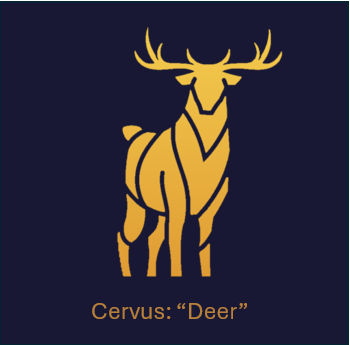Deer can cause significant damage to farmland, particularly when their populations are left unchecked. They often graze on crops such as cereals, vegetables, and fruit, leading to reduced yields and financial losses for farmers. Deer can also damage young trees and hedgerows, preventing proper growth and regeneration. In some cases, their browsing habits can strip entire fields of vegetation, compromising soil health and the overall productivity of the land. Furthermore, deer can trample crops, creating large areas of destroyed or compacted soil, making it harder for future planting and harvesting. This damage not only affects the immediate crop but can also disrupt long-term agricultural practices, impacting the land’s economic viability
Deer overpopulation in the UK has led to substantial economic losses for landowners, particularly in agriculture and forestry. In 2003, the Department for Environment, Food & Rural Affairs (Defra) estimated that deer caused approximately £4.3 million in agricultural damage in England, with cereal crops in East and South West England being the most affected.
Source: parliamentary office of Science and Technology 2009
Deer Management
Diseases carried by deer include internal parasites such as liver flukes, lung worms, and bowel worms; bovine tuberculosis, foot-and-mouth disease, bluetongue, red water fever, and Johne’s disease.
Deer can cause significant damage to forestry by reducing tree regeneration, browsing saplings, and bark stripping. Economic losses in forestry due to deer are hard to quantify, but their management costs are more readily assessed. For the Forestry Commission Scotland alone these amount to around £4.5 M net per year. The economic cost of deer to forestry is likely to remain high or to rise in future due to a range of factors
Reduced Damage to Crops and Vegetation: Deer can cause significant damage to crops, gardens, and forests by over-browsing. Effective management helps control deer populations, reducing this damage and protecting the landowner's investment in agriculture or landscaping.
Improved Forest Health: Overpopulation of deer can lead to the destruction of young trees and the degradation of forest ecosystems. Effective management helps maintain a healthy forest by allowing trees to regenerate and ensuring biodiversity.
Enhanced Habitat for Other Species: Deer can outcompete other wildlife species for food and space. By managing their numbers, landowners can help create more balanced ecosystems, supporting a variety of plants and animals.
Increased Aesthetic Value: A balanced deer population can lead to more diverse, healthier landscapes. This could improve the aesthetic value of the property, making it more enjoyable for landowners and visitors.
Better Wildlife Viewing Opportunities: Proper management can lead to healthier, more sustainable deer populations, which can enhance wildlife viewing opportunities for landowners and their guests.
Reduced Disease Spread: Deer populations that grow unchecked can be more prone to diseases, such as Chronic Wasting Disease (CWD). By managing deer numbers, landowners help reduce the risk of disease spread that could negatively impact both deer and other wildlife.
Safety on Roads: Overpopulation of deer can lead to more frequent vehicle collisions, which pose a risk to both the animals and drivers. Effective management can help reduce these accidents, improving safety for everyone on the roads.
Increased Property Value: Well-managed land that supports healthy ecosystems and reduces damage from wildlife can increase the overall value of the property, especially if it is used for agricultural or recreational purposes.
Hunting Opportunities: For landowners interested in hunting, effective deer management ensures a sustainable population, promoting quality hunting experiences while avoiding over-hunting or population decline.
Compliance with Regulations: In some regions, there are regulations in place to control deer populations. Proper management ensures that landowners remain in compliance with these rules, avoiding potential fines or penalties.
Implementing a successful deer management plan requires a well-structured approach
Combining various strategies to control deer populations while maintaining ecological balance and landowner objectives.
1. Assess the Current Deer Population
It all starts by conducting a thorough survey to assess the current deer population in the area. This includes determining the species of deer present, their population density, and the extent of the damage they cause. Techniques such as deer counting, trail cameras, and footprints help estimate numbers.
3. Developing a Comprehensive Strategy
Choose an effective combination of methods that will best achieve your objectives, we can support in Culling or Controlled Hunting: This involves reducing deer numbers through legal hunting or professional culling. It should be carried out in a controlled, ethical manner, ensuring compliance with regulations and wildlife management principles.
5.Adjusting the Plan as Needed
Deer management is an ongoing process. Based on monitoring results, make adjustments to the plan if certain methods are not working as expected. This might involve altering culling strategies, increasing or reducing hunting pressure, or implementing additional deterrent measures..
2. Set Clear Objectives
Working with you to define the goals of the management plan based on your land’s needs. Objectives may include reducing deer numbers, preventing crop damage, promoting forest regeneration, or managing disease spread. Setting specific, measurable targets will help guide the plan and measure its success.
4.Monitor the Results
Regular monitoring is essential to track the effectiveness of the plan. Surveying new signs of damage, or assessing the effective number of culled to see if the ecological and agricultural goals of the plan are being met.
6.Engaging the community?
Deer management often benefits from the cooperation of neighbouring landowners, local farmers, and conservation groups. Sharing knowledge, coordinating hunting efforts, or collectively implementing measures like fencing can enhance the overall success of the plan.
It’s important to raise awareness about deer management practices, especially in rural areas. This can include informing landowners about the importance of responsible management, the risks of overpopulation, and the benefits of maintaining a balanced ecosystem.
By following these steps and continuously evaluating the effectiveness of the plan, landowners can successfully manage deer populations and reduce the damage caused by overgrazing, crop destruction, and ecosystem disruption


